What's New
Displaying results 2291 - 2300 of 4052
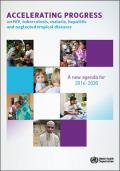
Resource | Publications,
The World Health Organization (WHO), through the work of the Cluster for HIV/AIDS, Tuberculosis, Malaria and Neglected Tropical Diseases, embraces the public health and research activities that make a difference to the lives of people at risk of, or suffering from, these diseases. This report looks back on the global progress made towards achieving MDG 6 between 2000 and 2015 in relation to all of the above diseases. It also summarizes global WHO recommendations and strategies for the SDG era, which are embedded in the sustainable development context, and sets out cross-cutting priorities. The report is designed to serve as a springboard for further discussion across the WHO network, with Member States and external partners.
At this time of transition from the MDGs to the SDGs, WHO is committed to working with countries and
partners to harness the power of global partnership, innovation and research to galvanize intensified action in countries and ensure that every last person benefits from our collective efforts to move towards the 2030 goals. We are confident that, together, we can put this fight on a sustainable footing, reduce the human suffering and deliver on our promise to the next generation.
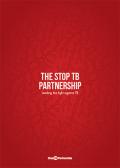
Resource | Publications,
The Stop TB Partnership is governed by a Coordinating Board, supported by two standing board committees: Executive Committee and Finance Committee. The Stop TB Partnership Coordinating Board has a responsibility towards the global TB community to build awareness, identify key strategic issues affecting TB and to set a strategic direction for the global effort to fight TB. The Coordinating Board is tasked with approving The Global Plan to Stop TB.
Since its creation in 2001, the Stop TB Partnership has developed “The Global Plan to Stop TB” - a roadmap for the fight against TB for a five-year period. Each plan provides an estimate for the resources needed every five years to achieve the goals the world has set. The Partnership is now working on “The Global Plan to stop TB 2016-2020” to outline what it takes to set the world on the right track to reach the goals set in the post-2015 Global TB Strategy. The Plan will provide a large-scale, costed blue-print for how global TB efforts can become significantly more ambitious and effective over the next five years, proposing dramatic changes to the way TB programs are run.
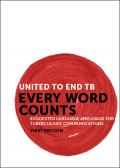
Resource | Publications,
Tuberculosis (TB) remains one of the world's most deadly diseases, killing three people every minute. Each year 9 million people develop TB and 1.5 million die from the disease. In 2014, the World Health Assembly unanimously approved a new End TB Strategy to end the global tuberculosis epidemic by 2035 – the first time governments have set a goal to end TB.
This should start with acknowledging that the language commonly used to speak about TB must evolve. Language influences stigma, beliefs and behaviors, and may determine if a person feels comfortable with getting tested or treated.
The authors describe how judgmental terms such as ‘TB suspect’ can powerfully influence attitudes and behaviour at every level – from inhibiting people to seek treatment to shaping the way policy-makers view the challenge of addressing the disease. The article also observes that the powerfully negative connotation of words such as ‘defaulter’ and ‘suspect’ place blame for the disease and responsibility for adverse treatment outcomes on one side — that of people with TB.
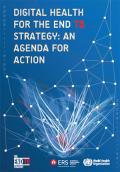
Resource | Publications,
This agenda outlines the strategic direction that the Global TB Programme of the World Health Organization (WHO) is mapping out to promote the integration of digital health concepts into TB prevention and care activities. The document is primarily intended to inform TB decisionmakers at national and international levels. Its alignment to the principles and the three pillars underpinning WHO’s new End TB Strategy will help them coordinate their various efforts in one common direction in the coming years.
The products and critical activities discussed in this agenda are premised upon the pressing needs and realities of TB programmes, of which three are particularly important:
- The current difficulties faced by managers and other decision-makers to match needs in TB prevention and care to the most appropriate digital health solutions. This is a result of the limited evidence base for the effectiveness of many digital health interventions for TB and the rapid advances in technologies of which potential users may be unaware.
- The need for an articulated and step-wise approach to develop comprehensive digital health solutions to support the End TB Strategy, in particular to limit fragmentation of efforts, leading for instance to multiple systems, redundancy and resource wastage.
- The opportunity to build upon, seek related synergies and align with promising ICT initiatives, both within health care and beyond, so as to increase the efficiency, scalability and sustainability of efforts.
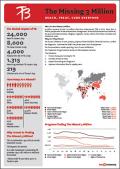
Resource | Infographics,
Who Are the Missed 3 Million: 9 million became ill and 1.5 million died from tuberculosis (TB) in 2013. More than 3 million people with TB were missed and undiagnosed. These include women and children, the poor and malnourished, refugees, migrants, miners, ethnic minorities, homeless and substance users.
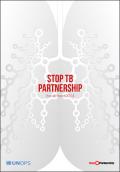
Resource | Publications,
Tuberculosis (TB) is a significant global public health threat. Despite being preventable and curable, the disease is widespread. In 2013, 9 million people fell ill with TB and 1.5 million people died from the disease – including 360,000 people coinfected with HIV. An estimated 550,000 children became ill with TB. The burden of this disease is disproportionately borne by relatively few countries, primarily in the developing world, with the majority of the global TB burden, spread across 22 highburden countries.
The number of people falling ill with TB is very slowly declining and the TB death rate dropped 45% between 1990 and 2013. Between 2000 and 2013, an estimated 37 million lives have been saved through TB diagnosis and treatment.
Despite substantial growth in funding for TB prevention, diagnosis and treatment since 2002, an annual gap of around US$ 2 billion is still needed to ensure a full response to the global TB epidemic. And critically, although new tools are emerging from the pipeline, much more investment is needed to reach, treat and cure all people with TB and accelerate progress towards the bold goal of ending TB by 2035.
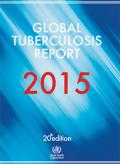
Resource | Publications,
The year 2015 is a watershed moment in the battle against tuberculosis (TB). It marks the deadline for global TB targets set in the context of the Millennium Development Goals (MDGs), and is a year of transitions: from the MDGs to a new era of Sustainable Development Goals (SDGs), and from the Stop TB Strategy to the End TB Strategy. It is also two decades since WHO established a global TB monitoring system; since that time, 20 annual rounds of data collection have been completed.
This is the twentieth global report on tuberculosis (TB) published by WHO in a series that started in 1997. It provides a comprehensive and up-to-date assessment of the TB epidemic and progress in implementing and financing TB prevention, care, control and research at global, regional and country levels using data reported by over 200 countries that account for more than 99% of the world's TB cases. In this 2015 edition, particular attention is given to assessment of whether 2015 global TB targets set in the context of the Millennium Development Goals were achieved worldwide and at regional and country levels.
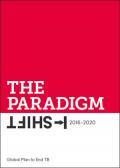
Resource | Publications,
When the world first set out to eradicate smallpox nearly 50 years ago, many felt it was not possible, and some were even strongly against the idea. Visionaries in the early global AIDS response were also met with resistance when they suggested that AIDS medicines could be provided to all who needed them regardless of their income or status in society. As with those who doubted the eradication of small pox was possible, they were proven wrong.
What shifted and made these successes possible? It was the belief that change was not only possible, but necessary.
These are the questions that The Global Plan to End TB 2016-2020: The Paradigm Shift seeks to answer. It is an ambitious plan of action that provides a blueprint for the TB community to drive bold action and ambitious change. A Task Force of world renowned experts and a wide community of dedicated people working on TB came together to contribute to the development of this plan.
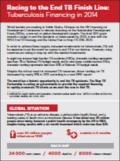
Resource | Infographics,
World leaders are meeting in Addis Ababa, Ethiopia for the UN Financing for Development Conference to discuss financing for the Sustainable Development Goals (SDGs), a new set of global development targets. The draft SDG goals include a target to end the epidemic of tuberculosis by 2030, in line with the
WHO End TB Strategy and the Global Plan to Stop TB 2016-2020.
In order to achieve these targets, increased investments for tuberculosis (TB) will be essential to set the world on course to end TB in our lifetime. However, many countries are failing to step up with the needed investments.

Resource | Publications,
The Essentials provides in-depth explanations of the vision, goal, targets and milestones of the End TB Strategy as well as the key indicators to measure progress. It then outlines the essential features of operationalizing the principles, pillars and components of the End TB Strategy. Country experiences are included throughout as examples in applying elements of the strategy.
The Essentials is organized in three parts: Part I presents the overall approach, principles and the first steps of implementation expected at the country level. Part II explains the vision, goal, indicators, targets and milestones of the Strategy and Part III outlines the policies, the actors and actions needed to help implement the new approaches laid out under the three pillars of the Strategy: (i) Integrated, patient-centred care and prevention; (ii) Bold policies and supportive systems; and (iii) Intensified research and innovation.





